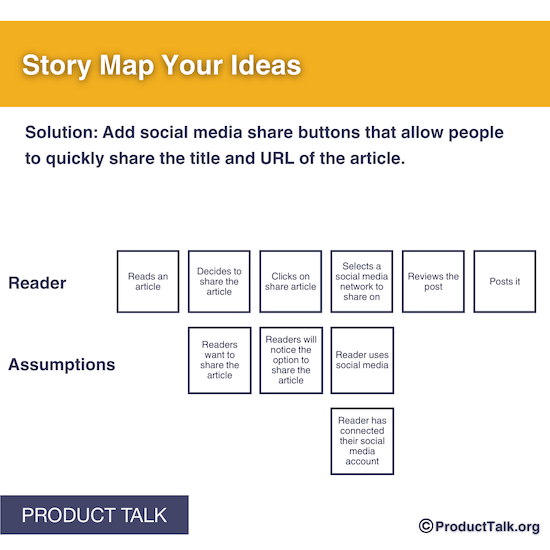Story Mapping

What is story mapping?
Story mapping is a technique where teams illustrate what a customer needs to do to get value from a solution, creating a map that shows the steps in a customer's workflow or journey.
What Is a Story Map?
A story map visualizes the customer's path to getting value from a solution. It breaks down the customer experience into individual steps, making it easy to see the complete workflow at a glance.
Product teams use story maps to:
- Communicate requirements across the team
- Prioritize work by understanding which steps are most critical
- Align around specific solutions before building them
- Uncover hidden assumptions about what needs to be true
How do you use story maps to generate assumptions?
One of the most powerful uses of story mapping is uncovering hidden assumptions. Teams walk through the map and ask for each step:
"What needs to be true in order for our customer to do this step?"
This simple question helps generate assumptions across all five categories:
- Desirability: Will customers want to do this?
- Viability: Can we support this step as a business?
- Feasibility: Can we technically enable this step?
- Usability: Can customers successfully complete this step?
- Ethical: Could this step cause harm?
By systematically examining each step, teams surface assumptions they might otherwise miss.
How does story mapping fit with other visualization tools?
Story mapping is one of several visualization tools teams use to externalize their thinking:
- Experience maps visualize what teams know about customers
- Interview snapshots capture learning from customer conversations
- Opportunity solution trees map paths to desired outcomes
- Story maps align teams around specific solutions
- Assumption maps clarify priorities for testing
Each tool serves a different purpose in the discovery process, and teams often use them together to build shared understanding.
Learn more:
- Assumption Testing: Everything You Need to Know to Get Started
Related terms:
- Assumption Testing
- Solutions
- Usability
Last Updated: October 25, 2025
